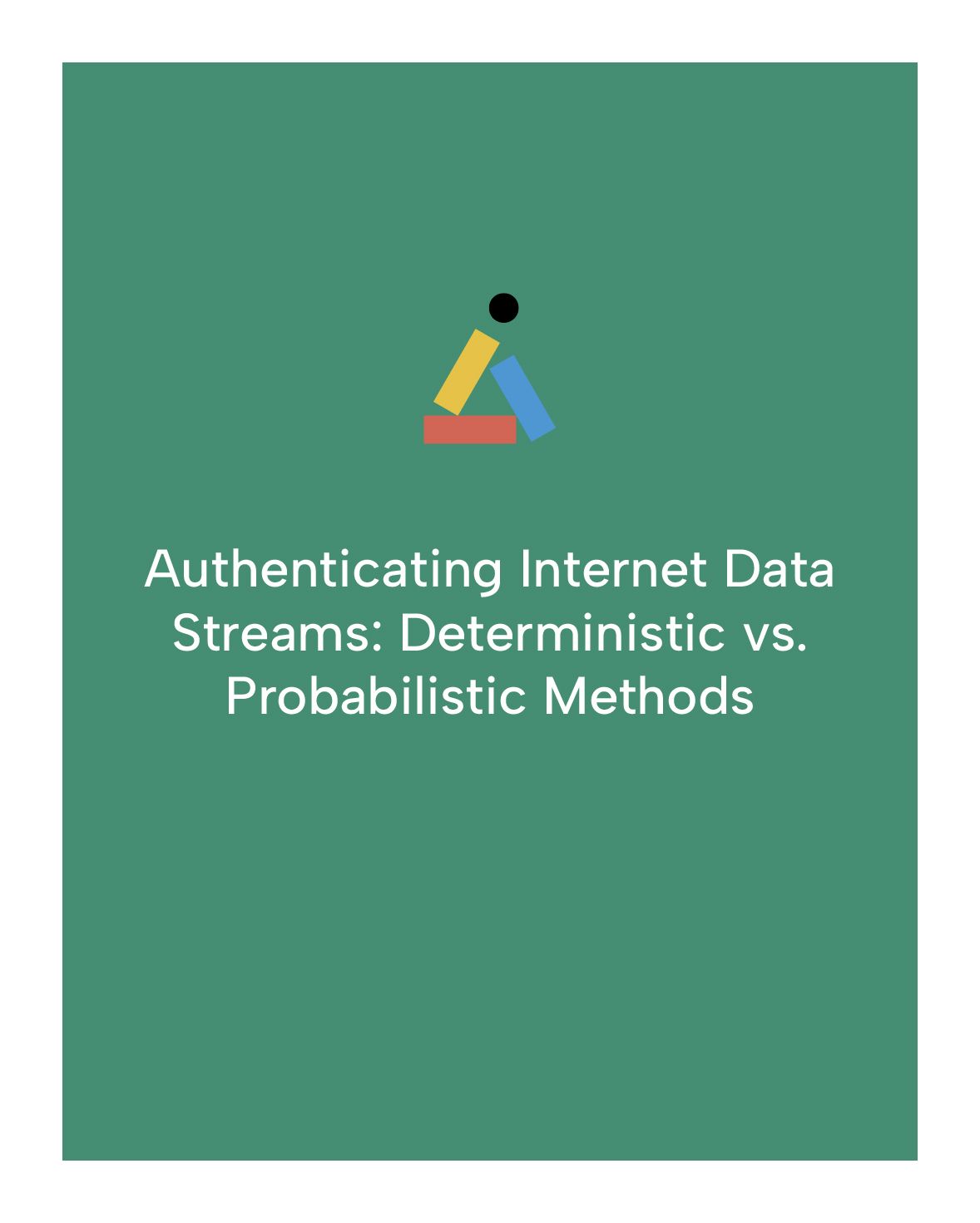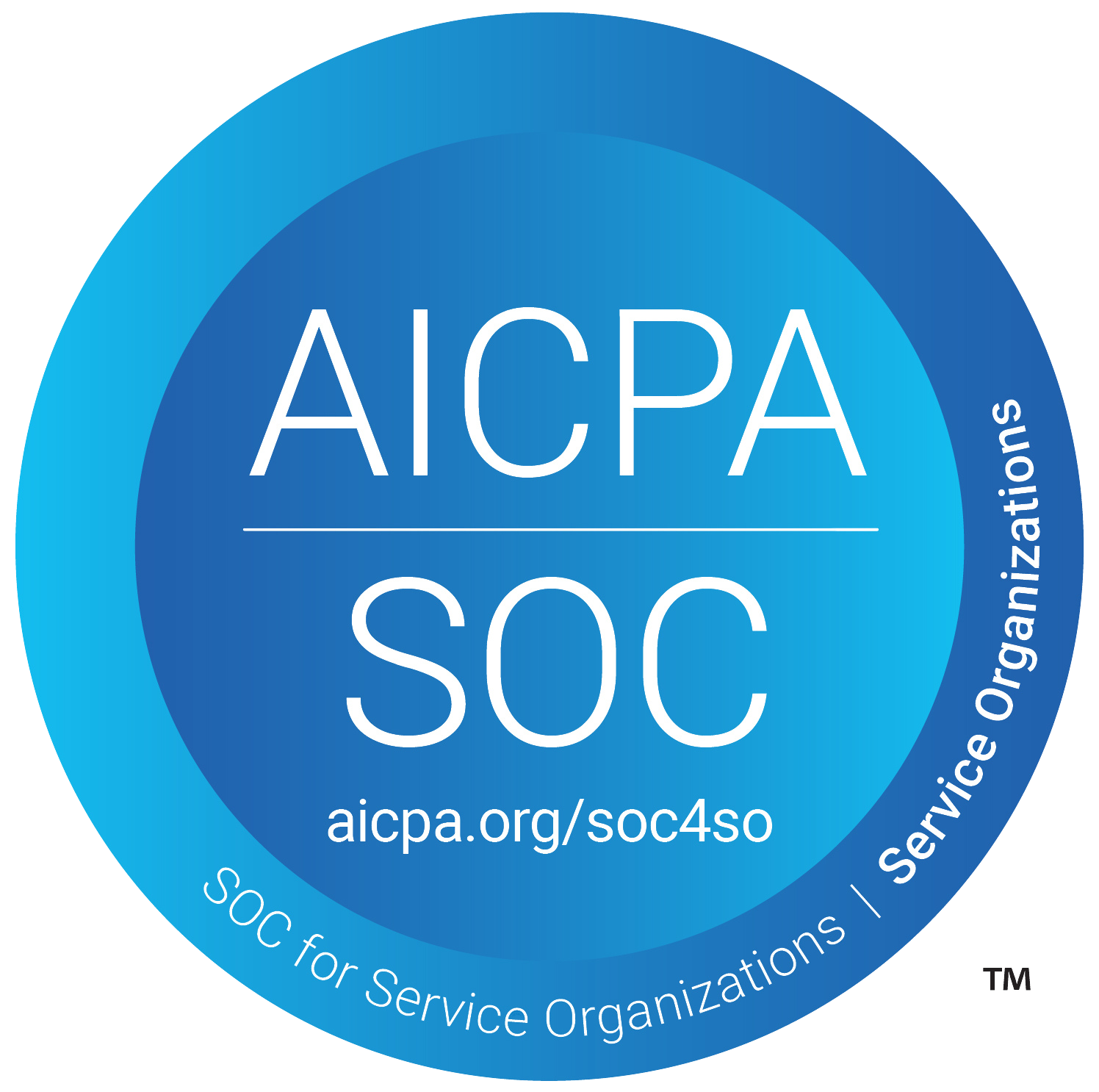Explore our Resource Library
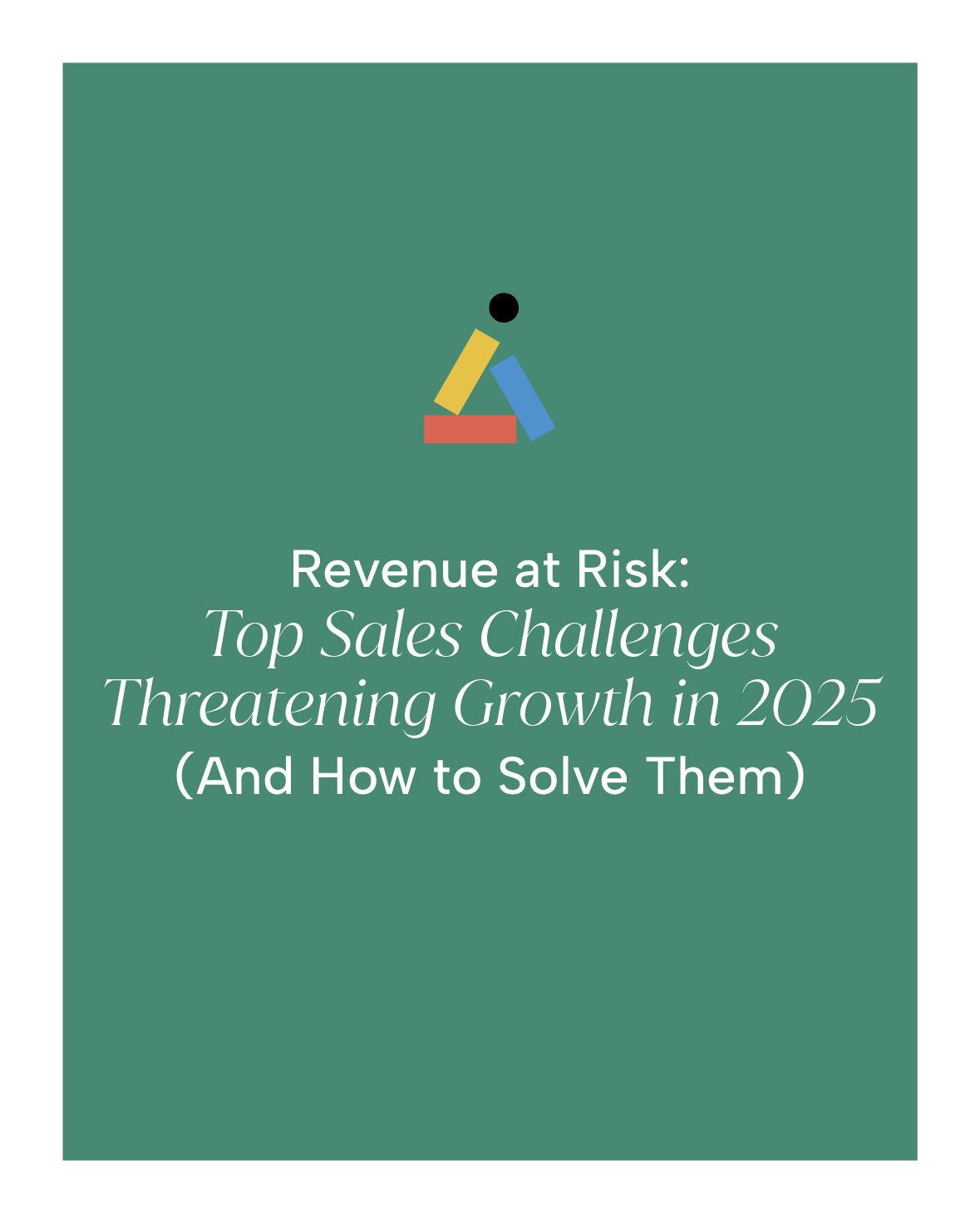
By qiworks dm
•
April 8, 2025
With increased competition, rapid adoption of AI-powered solutions, and macroeconomic uncertainties, the sales teams are under tremendous pressure to hit growth targets while navigating new and complex challenges. For revenue leaders, the stakes couldn’t be higher. Traditional prospecting methods are becoming less effective, while sales efficiency has become a non-negotiable. Furthermore, as AI reshapes the sales ecosystem, not all solutions are created equal—leaving organizations struggling to identify and prioritize high-intent buyers. In this blog, we’ll explore major sales challenges that are putting revenue at risk in 2025—and how you can overcome them with smarter, data-driven strategies. 1. The Sales Playbook Is Broken: Why Traditional Prospecting No Longer Works The days of relying solely on cold calling and mass email outreach are over. Today’s buyers are more informed, selective, and harder to reach. According to a recent Gartner study, 83% of a buyer’s journey is completed before they ever engage with a sales representative. This shift has rendered many traditional prospecting methods ineffective. Why is traditional prospecting failing? Information overload: Buyers are bombarded with sales messages, making it harder for generic outreach to break through the noise. Inaccurate targeting: Many organizations still rely on outdated or incomplete data, leading to wasted time on unqualified leads. Longer sales cycles: Decision-making processes now involve multiple stakeholders, adding complexity and slowing down conversions. Solution: Focus on Intent-Driven Prospecting Rather than casting a wide net, sales teams should focus on identifying and engaging buyers who are actively in the market. This means leveraging real-time intent data to detect signals that indicate when a prospect is researching solutions or preparing to make a purchase. 2. Sales Efficiency in a Tight Market: Doing More with Less In 2025, "do more with less" is no longer just a mantra—it’s a business imperative. Sales teams are being asked to generate more pipeline and close more deals without the luxury of expanding headcount or budgets. What’s driving the need for efficiency? Budget constraints: Companies are tightening spending while still demanding aggressive growth targets. Inexperienced sales teams: Many organizations are opting for junior SDRs with larger AE-to-SDR ratios, putting pressure on fewer, less-experienced reps. Operational complexity: Siloed systems and manual workflows slow down the sales process and introduce errors. Solution: Automate and Optimize Workflows Sales teams must embrace AI-powered automation to reduce manual work and improve efficiency. Tools that can automate lead scoring, prioritize high-value accounts, and deliver actionable insights in real-time can significantly boost productivity. 3. How Sales Teams Can Prioritize the Top 10% of In-Market Buyers for Better Conversion Rates Not all leads are created equal. In a competitive environment, the ability to identify and prioritize the most promising buyers is critical. However, many sales teams still rely on basic demographic and firmographic data, missing out on behavioral and intent signals that reveal who is ready to buy. Why does this matter? Wasted effort: Sales reps waste time pursuing leads with no real purchase intent. Missed opportunities: High-intent buyers go unnoticed or are contacted too late in their decision-making process. Inefficient pipelines: Without proper lead prioritization, pipelines become bloated with low-quality opportunities. Solution: Leverage Verified Person-Level Intent Data Sales teams need to adopt platforms that go beyond traditional lead scoring by combining behavioral intent signals with real-time buyer activity. This approach allows you to focus resources on the top 10% of buyers who are most likely to convert—driving better outcomes with less effort. 4. The AI Sales Revolution: Why Not All AI-Powered Solutions Are Equal AI has undoubtedly transformed sales, but not all AI solutions deliver on their promises. Many organizations have invested in AI-powered SDR tools only to find that these systems fall short due to poor data quality, black-box algorithms, and limited transparency. What makes AI adoption challenging in sales? Data Silos Remain : AI cannot deliver value if customer data is fragmented across multiple systems, preventing a unified view of the buyer journey. Lack of Contextual Understanding : Many AI models lack the ability to interpret complex buyer behavior across different channels, leading to missed opportunities. Rigid Automation : Over-automated workflows that prioritize volume over value often dilute personalization and reduce buyer engagement. Solution: Choose AI That Enhances Human Judgment The best AI solutions augment human expertise rather than replace it. Look for platforms that provide transparent decision-making, allow for customizable workflows, and integrate seamlessly with your existing tech stack. Audienz.ai’s Unique Approach: Identifying, Verifying, and Activating High-Intent Decision-Makers Audienz.ai is transforming the future of sales engagement by combining advanced AI with verified intent data—empowering sales teams to close more deals faster. Here’s how Audienz.ai helps you stay ahead of the competition: Identifying High-Intent Buyers Uses behavioral intent signals from multiple sources (dark funnel, social activity, community engagement) to detect when decision-makers are actively researching solutions. Verifying Decision-Makers Cross-references intent data with real-time firmographics and buyer activity to ensure the leads are accurate, qualified, and actionable. Activating Personalized Engagement Delivers contextually relevant insights to help sales reps engage buyers with the right message at the right time. Streamlining Sales Workflows Automates repetitive tasks, improves CRM hygiene, and prioritizes the top 10% of buyers most likely to convert. Providing Transparent Insights Offers clear visibility into lead-scoring logic and customizable models to align with your GTM strategy. With Audienz.ai, you can stop guessing and start closing—faster, smarter, and more efficiently. Conclusion: The Future of the Sales Playbook As we move into 2025, sales teams are navigating a perfect storm—traditional strategies are breaking down, efficiency is no longer optional, and AI is reshaping how deals are won. The modern sales playbook must evolve to thrive in this new environment. To stay ahead, revenue leaders should embrace a data-first, buyer-centric approach that prioritizes: Intent-Driven Prospecting – Identify and engage the right buyers at the right time. Operational Efficiency – Automate manual tasks to free up time for meaningful conversations. AI-Augmented Decision-Making – Use transparent, adaptive AI to guide strategy without losing the human touch. Ready to transform your sales process and identify your best buyers before your competitors do? Experience the power of Audienz.ai— Request a Free Demo Today!
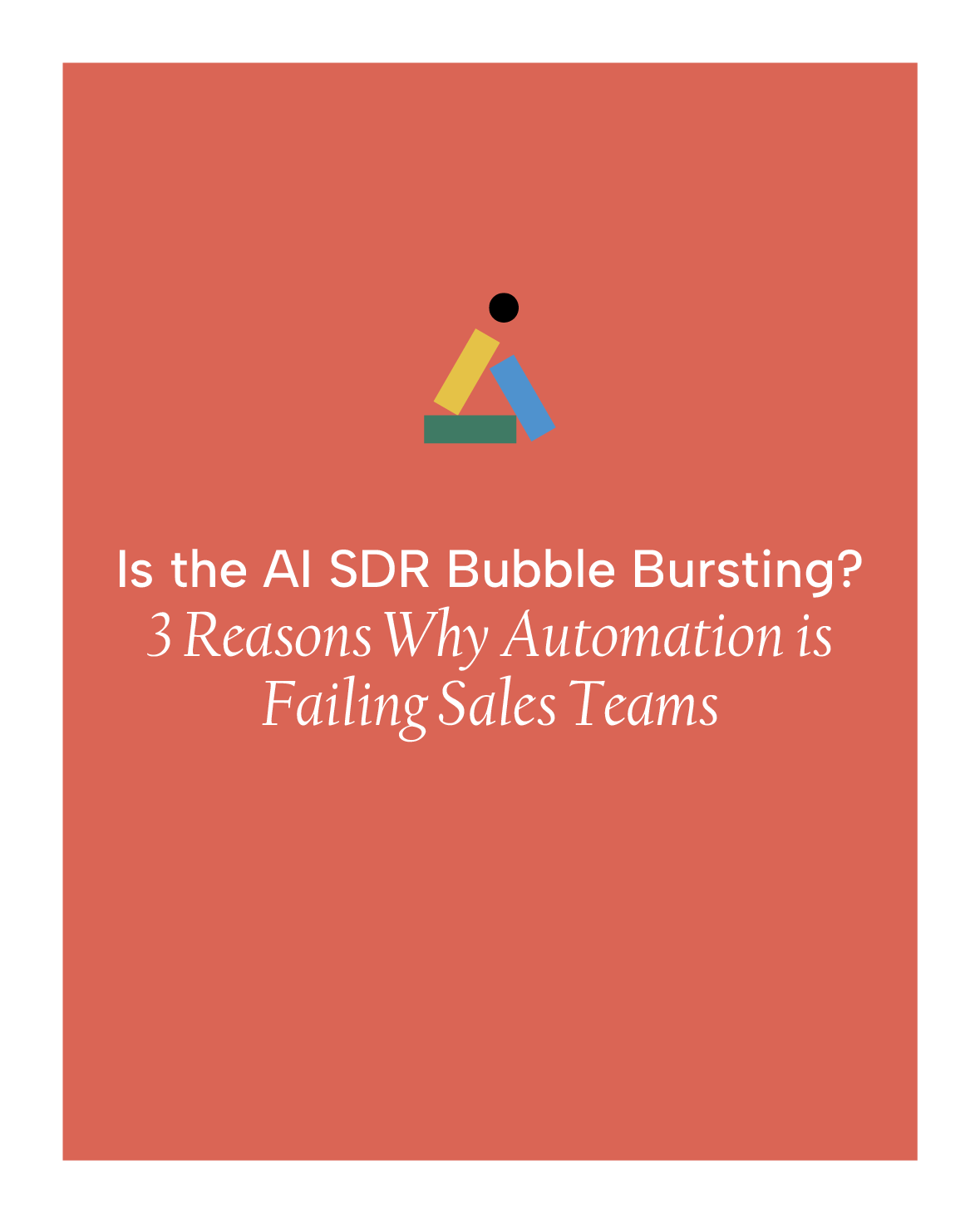
By qiworks dm
•
April 7, 2025
AI Sales Development Representatives (SDRs) promised to revolutionize sales prospecting by automating the tedious work of lead generation and outreach. Investors poured millions into AI SDR platforms, betting big on their ability to drive efficiency and boost revenue. For a while, the promise seemed real. AI-powered systems offered 24/7 outreach, hyper-personalized messaging, and faster pipeline growth. But cracks were beginning to show. Instead of delivering predictable growth, many AI SDR platforms are causing operational headaches, eroding trust, and undermining pipeline quality. Sales leaders are now asking tough questions: Is the AI SDR bubble bursting? And if so, what went wrong? Here are three major reasons why AI SDR automation is failing sales teams—and how smarter sales engagement platforms like Audienz.ai offer a better path forward. Challenge #1: Garbage In, Garbage Out—Flawed Data Foundations AI SDRs depend entirely on the data they’re fed. But too often, that data is flawed, outdated, or incomplete. Many AI-driven sales platforms rely on commoditized data sources like LinkedIn or generic third-party datasets. While these sources offer scale, they lack the depth required to deliver accurate, high-quality leads. When flawed data powers outreach, the result is predictable: Poor Targeting: AI sends messages to irrelevant or unqualified leads, wasting time and damaging brand reputation. Low Conversion Rates: Without accurate intent signals, AI SDRs struggle to identify prospects who are ready to engage. Domain Blacklisting: High volumes of generic outreach trigger spam filters, leading to blocked email domains and reduced deliverability. Key Takeaway: Automation alone can’t fix bad data. Without a foundation of verified, high-quality intent data, AI SDRs amplify errors instead of solving them. Challenge #2: Mass Outreach is Destroying Sales Pipelines AI SDRs often operate on a simple equation: more outreach equals more pipeline. This logic drives mass-email strategies that prioritize volume over value. But today’s buyers are savvier—and more overwhelmed—than ever. The consequences of mass outreach are significant: Inbox Fatigue: Prospects receive hundreds of automated messages daily, leading to lower open rates and increased opt-outs. Burned TAM (Total Addressable Market): AI exhausts potential leads quickly, leaving fewer opportunities for human reps to engage meaningfully. Generic Messaging: Personalization at scale remains a challenge. Most AI SDRs recycle templated messages, failing to resonate with sophisticated buyers. In high-touch sales environments—especially for enterprise accounts—automation can’t replace the strategic insights and human empathy required to close deals. Key Takeaway: Over-reliance on mass outreach erodes trust and damages the long-term health of your sales pipeline.
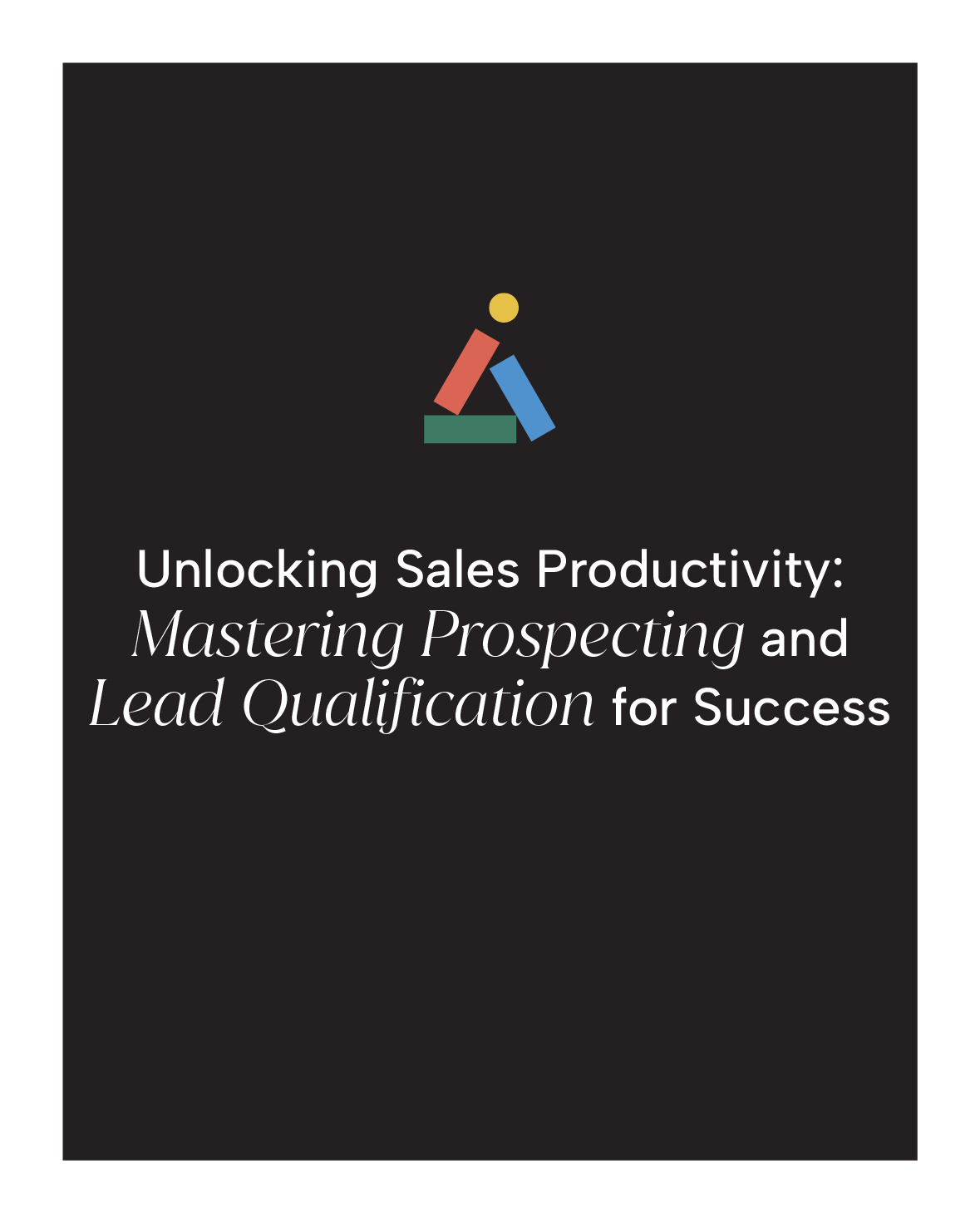
By qiworks dm
•
February 25, 2025
In a world where sales teams are continually challenged to adapt and respond quickly to changing market dynamics, the ability to efficiently prospect and qualify leads has never been more critical. According to a report from HubSpot, many sales professionals believe that prospecting is the most challenging part of the sales process. This statistic underscores the importance of refining these foundational tactics to boost overall sales productivity. In this blog, we’ll explore innovative ways to enhance prospecting and lead qualification. The Importance of Efficient Prospecting Imagine setting off on a journey without a map. You may find interesting places along the way, but the chances of arriving at your destination are slim. Similarly, inefficient prospecting can lead sales teams astray, diverting their focus from high-quality leads to unqualified opportunities. Prospecting is not just about casting a wide net; it's about targeting the right individuals who are likely to convert. Effective prospecting yields a robust sales pipeline. According to a report from HubSpot, 65% of sales professionals say that prospecting is the most challenging part of the sales process. This insight highlights the critical nature of refining these foundational tactics to boost overall sales productivity. Gartner reports that high-performing sales teams focus 3.5 times more on finding qualified leads than their less effective counterparts, leading to improved close rates by as much as 25%.
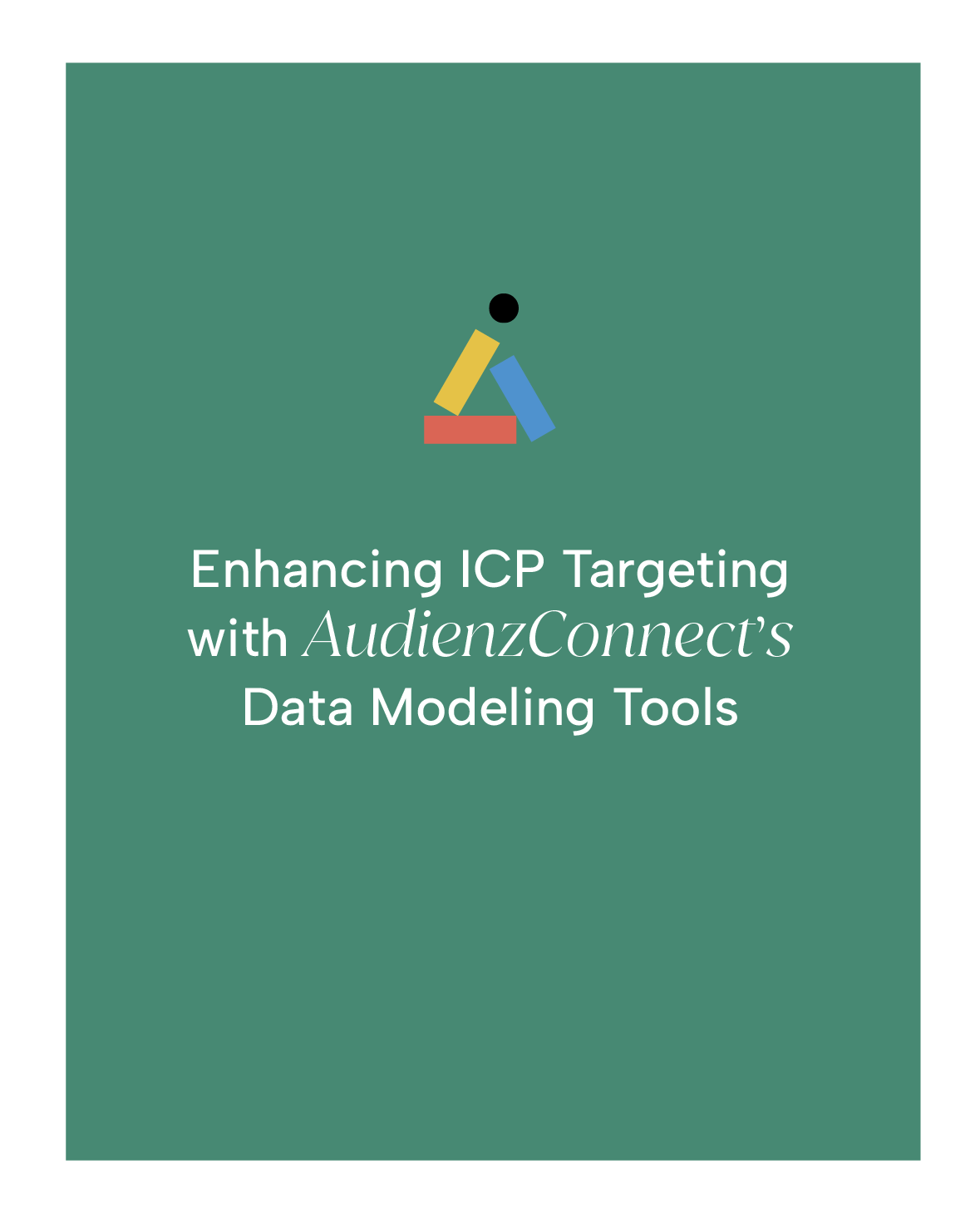
By qiworks dm
•
January 15, 2025
In the ever-evolving world of digital marketing, the ability to pinpoint and engage with ideal customers is tantamount to success. As marketers, we stand at the crossroads of data and strategy, where our insights directly inform our efforts. So, ask yourself: Are you fully leveraging the power of your data to fuel your Ideal Customer Profile (ICP) targeting? This blog delves into the intricacies of ICPs and how AudienzConnect’s robust data modeling capabilities refine your targeting efforts with enriched, real-time data. Decoding the DNA of Your Ideal Customer: ICPs Unveiled An Ideal Customer Profile (ICP) is more than just a population segment; it’s a detailed portrait of the customers who are most likely to derive significant value from your offerings. An effective ICP encompasses not only demographics—such as age, location, and income—but also psychographics, which include interests, values, and behaviors. The more precise your ICP, the more effectively you can tailor your marketing efforts, ensuring you speak directly to those who are most likely to convert. An accurate ICP allows for more focused marketing strategies, optimized resource allocation, and improved customer engagement. However, the challenge lies in continuously refining these profiles to keep pace with changing market dynamics and customer preferences. This is where data modeling plays a crucial role.
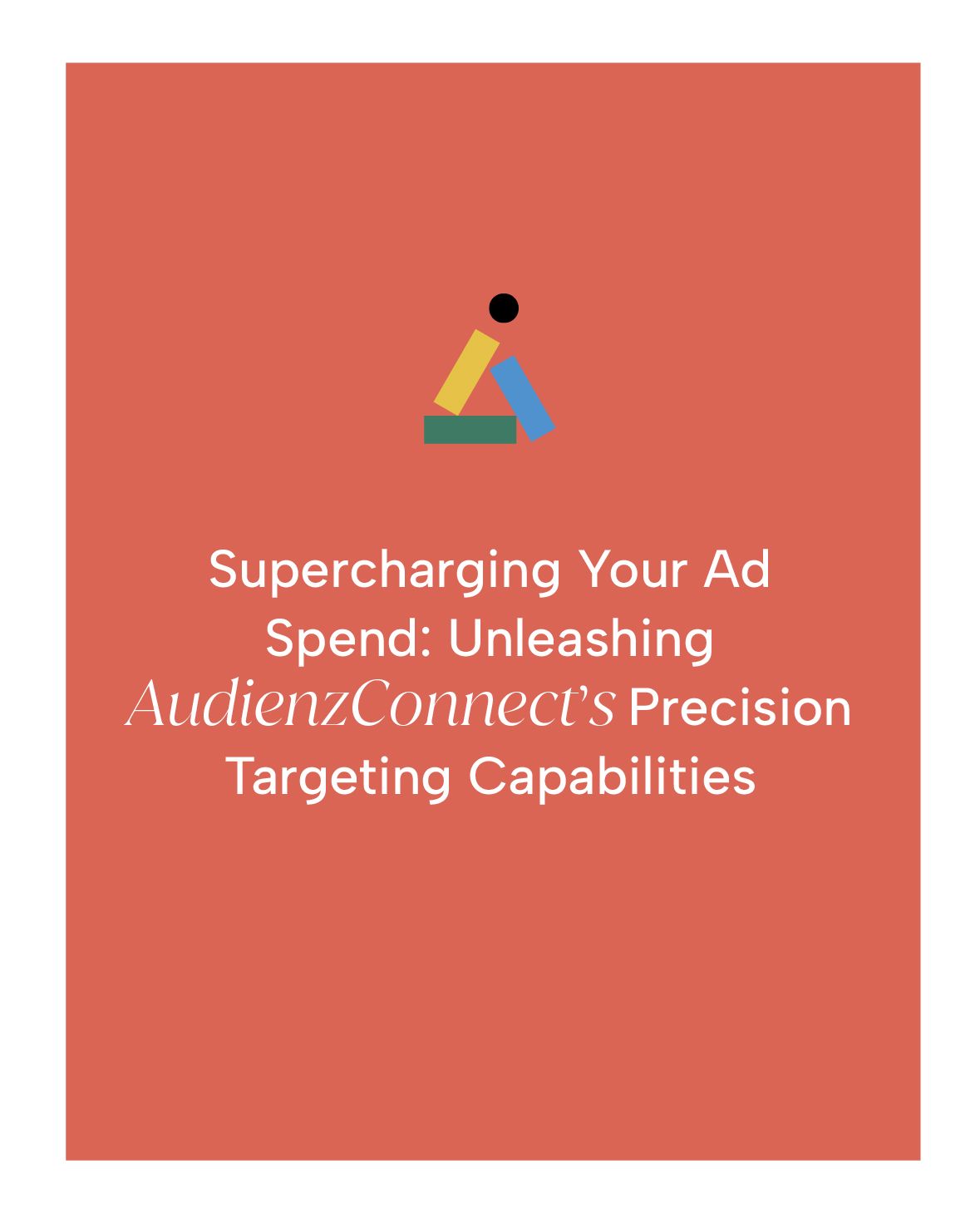
By qiworks dm
•
January 7, 2025
In the digital marketing landscape, where brands compete fiercely for consumer attention, optimizing ad spend is paramount. A well-allocated budget can mean the difference between a successful campaign and a financial misstep. Enter AudienzConnect—a sophisticated tool designed to supercharge your advertising efforts through precision targeting capabilities. By leveraging enriched, real-time first-party data, AudienzConnect empowers marketers to reach their audiences more effectively, ensuring higher engagement, better conversions, and optimized returns on ad spend (ROAS). Understanding Precision Targeting Precision targeting is not just a trend; it is an essential strategy that allows marketers to reach specific audience segments with tailored messages. Unlike broad targeting methods that cast a wide net, precision targeting focuses on delivering the right message to the right audience at the right time. With traditional methods, advertisers often spend money targeting uninterested consumers, but AudienzConnect changes the game by providing the tools necessary for refined targeting strategies.
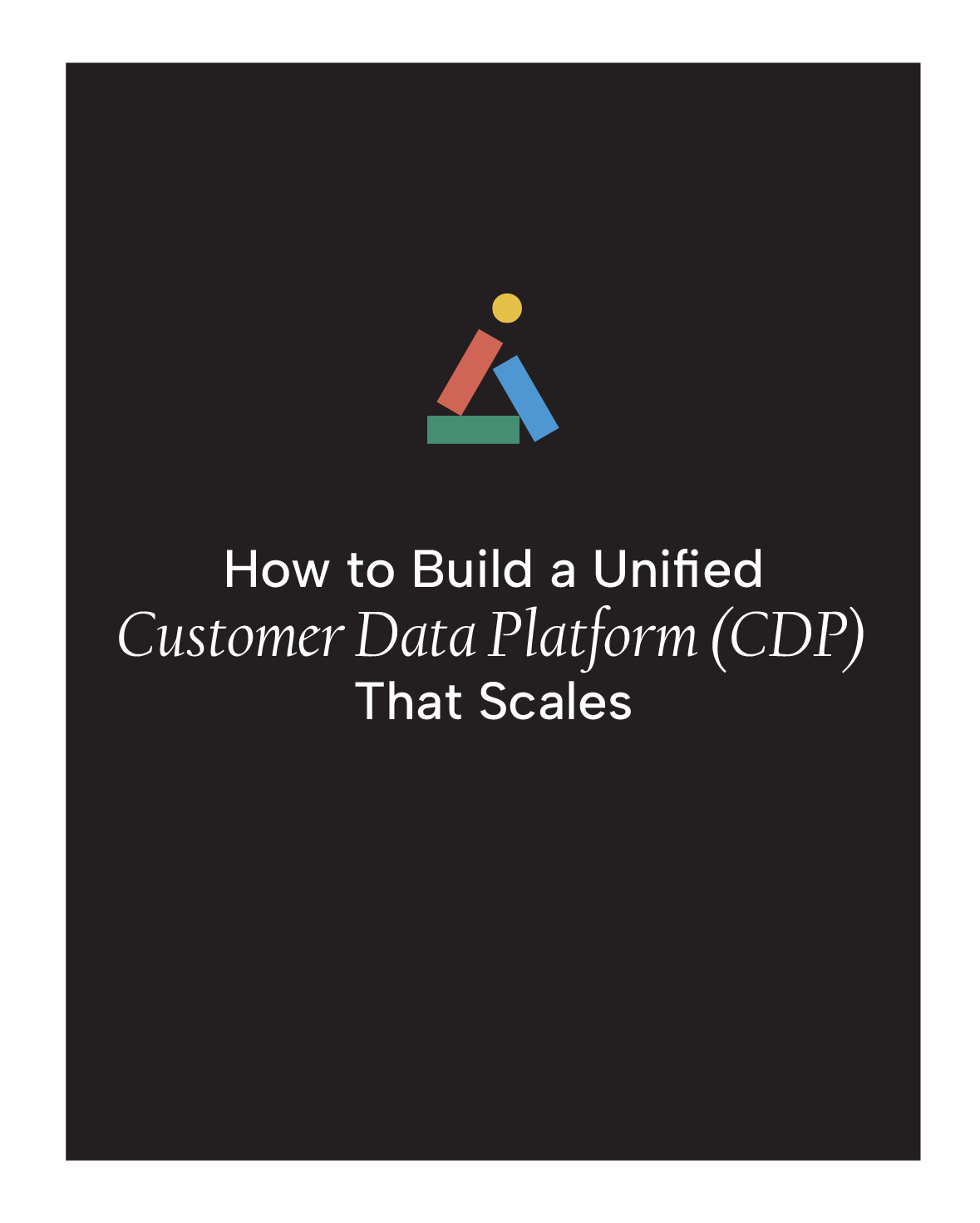
By qiworks dm
•
December 11, 2024
Today, businesses are inundated with information from multiple sources. To stay competitive, marketers need a solid foundation—a Customer Data Platform (CDP)—that can not only house and manage this data but also scale as the business grows. Audienz.ai presents an innovative Liquid CDP solution with features that effectively address complex customer interactions and growth challenges. In this blog, we’ll provide a step-by-step guide to building a scalable CDP while leveraging the unique capabilities of AudienzAI . Let’s get started. Step 1: Defining Your Objectives A clear understanding of your objectives is crucial for building a unified CDP. What data will you need to collect? How will it help you achieve your marketing goals? Align with key stakeholders to determine how a unified customer data platform will enhance customer insights, campaign effectiveness, and overall business success.

By Ajay Sikri
•
October 19, 2024
In today's data-centric business landscape, choosing the right platform for customer data management and activation is crucial. While both Audienz.AI and Hightouch offer powerful solutions, they have distinct features and approaches. This blog post will provide an in-depth comparison, highlighting the unique benefits of Audienz.AI. Key Feature Comparison

By qiworks dm
•
October 9, 2024
In today's digital landscape, understanding the customer journey has become critical to success. With more touchpoints than ever, businesses must track customer interactions across various channels and make informed decisions based on that data. Customer journey mapping using first-party data allows businesses to enhance personalization strategies, delivering highly targeted and relevant experiences that increase conversions and customer loyalty. This guide will take you through a step-by-step process for using first-party data to map customer journeys and improve your personalization efforts. What is Customer Journey Mapping? Customer journey mapping is the process of visualizing and analyzing the steps a customer takes when interacting with your brand across multiple touchpoints. It provides a holistic view of the entire customer experience, from initial awareness to post-purchase behavior, helping businesses identify potential pain points, areas for improvement, and opportunities to provide personalized engagement. By creating a customer journey map, businesses can gain insights into how customers engage with their brand, what influences their purchasing decisions, and where they may encounter friction. This enables marketers to refine their strategies, optimize touchpoints, and tailor messaging to align with customer preferences and behaviors. The Role of First-Party Data in Customer Journey Mapping First-party data is the information that a company collects directly from its customers through their interactions with your website, apps, email, or other channels. This data is valuable because it provides real insights into how customers behave and engage with your brand. Unlike third-party data, which may be less accurate and less personal, first-party data allows businesses to track specific customer interactions in real-time and use those insights to improve their customer journey mapping. Key Benefits of Using First-Party Data: Accuracy: First-party data is collected directly from your customers, ensuring that the information is accurate and relevant to your brand. Granular Insights: With first-party data, businesses can capture detailed information about customer behaviors, preferences, and pain points, allowing for highly personalized customer journeys. Compliance: Unlike third-party data, which can raise privacy concerns, first-party data is collected with customer consent, ensuring compliance with data privacy regulations like GDPR and CCPA. Steps to Map the Customer Journey with First-Party Data 1. Identify Key Touchpoints The first step in customer journey mapping is to identify the key touchpoints where customers interact with your brand. These touchpoints can include website visits, email interactions (such as email opens, clicks, or responses), social media engagement, customer service, and in-store experiences. Understanding the different channels your customers use is essential to create a comprehensive journey map. For example, a customer may begin their journey by discovering your brand through social media, visiting your website, signing up for a newsletter, and finally making a purchase. By tracking these interactions, businesses can identify the channels that drive the most engagement and conversion. 2. Collect and Analyze First-Party Data Once you've identified the key touchpoints, the next step is to collect and analyze the first-party data associated with these interactions. Tools like Google Analytics, CRM systems, email marketing platforms, and social media analytics provide valuable insights into customer behaviors at each stage of the journey. Some key data points to consider include: Website behavior: Pages visited, time spent on site, bounce rates, conversion rates, etc. Email engagement: Open rates, click-through rates, and content engagement. Social media interactions: Likes, shares, comments, and direct messages. Customer service data: Frequency of inquiries, common pain points, and resolutions. This data helps marketers understand how customers move through the journey and where they may encounter obstacles or opportunities for personalized engagement. 3. Segment Your Audience Audience segmentation is critical to delivering personalized experiences. By dividing your customers into specific segments based on their behaviors, preferences, and needs, you can create targeted messaging that resonates with each group. First-party data allows for more precise segmentation by providing detailed insights into individual customer journeys. For example, you might segment customers based on their purchasing behaviors (first-time buyers vs. repeat customers), engagement with your brand (highly engaged vs. low engagement), or demographic factors (age, gender, location). Each segment will have different needs, and mapping the journey for each group allows businesses to tailor their messaging to meet those needs. Using tools like Audienz.ai, which leverages AI-powered audience segmentation, businesses can go beyond basic demographic segmentation and gain deeper insights into their customer base. This enables the creation of hyper-targeted campaigns that drive higher engagement and conversions. 4. Create a Customer Journey Map Now that you’ve gathered data and segmented your audience, it’s time to create a customer journey map. A typical journey map will include the stages of the customer journey (awareness, consideration, purchase, post-purchase) and the associated touchpoints for each stage. By mapping out the customer journey, businesses can identify the moments that matter most to their audience and ensure that each touchpoint is optimized for personalization. To create a customer journey map: Start with the end goal: Identify what you want customers to achieve at the end of their journey (e.g., making a purchase, signing up for a subscription). Map the stages: Divide the customer journey into stages (awareness, consideration, decision, retention, advocacy). Plot the touchpoints: Identify the key interactions customers have at each stage and track the behaviors associated with each touchpoint. Identify pain points and opportunities: Look for areas where customers encounter friction or drop off and explore opportunities to enhance engagement. 5. Personalize the Journey With a customer journey map in place, businesses can now use first-party data to deliver personalized experiences at every touchpoint. Personalization strategies can include dynamic email content, personalized product recommendations, customized landing pages, and tailored social media ads. By aligning your messaging with each customer’s stage in the journey, you can build stronger connections and increase the likelihood of conversion. For example, if a customer has been browsing specific product categories on your website, you can send them personalized emails with product recommendations based on their interests. Or, if a customer frequently interacts with your brand on social media, you can target them with relevant ads that speak directly to their needs. Enhancing Personalization Strategies with First-Party Data First-party data plays a critical role in enhancing personalization strategies. It allows businesses to tailor their messaging to individual customer preferences, behaviors, and needs. Here are some key ways to leverage first-party data for enhanced personalization: Predictive Analytics: Use AI-driven predictive analytics to anticipate customer needs and deliver personalized experiences before customers even express them. Dynamic Content: Create dynamic content that changes based on customer behavior. For example, use personalized email content that adapts to customer preferences or website experiences that show personalized product recommendations. Real-Time Personalization: Use real-time data to deliver personalized experiences at the exact moment a customer engages with your brand. For instance, if a customer is browsing a particular product page, you can offer personalized promotions or discounts to encourage a purchase. Measuring Success Once your customer journey map is in place and personalized experiences are being delivered, it’s important to measure the success of your efforts. Key performance indicators (KPIs) to track include: Conversion rates: Measure how effectively your personalized messaging leads to desired outcomes (e.g., purchases, sign-ups). Engagement metrics: Track customer engagement with your personalized content across channels. Customer retention: Measure how well your personalization strategies contribute to customer loyalty and repeat purchases. By regularly reviewing and analyzing these metrics, businesses can continuously optimize their customer journey map and ensure that their personalization strategies are driving results. Conclusion Customer journey mapping with first-party data is a powerful way to enhance personalization strategies and deliver targeted, relevant experiences across all touchpoints. By leveraging the data you already have and implementing segmentation, predictive analytics, and real-time personalization, you can create a seamless customer journey that boosts engagement, conversions, and customer satisfaction. Ready to take your customer journey mapping to the next level? Explore how Audienz.ai can help you unlock the full potential of your data and optimize your customer journeys for success.

By qiworks dm
•
April 8, 2025
With increased competition, rapid adoption of AI-powered solutions, and macroeconomic uncertainties, the sales teams are under tremendous pressure to hit growth targets while navigating new and complex challenges. For revenue leaders, the stakes couldn’t be higher. Traditional prospecting methods are becoming less effective, while sales efficiency has become a non-negotiable. Furthermore, as AI reshapes the sales ecosystem, not all solutions are created equal—leaving organizations struggling to identify and prioritize high-intent buyers. In this blog, we’ll explore major sales challenges that are putting revenue at risk in 2025—and how you can overcome them with smarter, data-driven strategies. 1. The Sales Playbook Is Broken: Why Traditional Prospecting No Longer Works The days of relying solely on cold calling and mass email outreach are over. Today’s buyers are more informed, selective, and harder to reach. According to a recent Gartner study, 83% of a buyer’s journey is completed before they ever engage with a sales representative. This shift has rendered many traditional prospecting methods ineffective. Why is traditional prospecting failing? Information overload: Buyers are bombarded with sales messages, making it harder for generic outreach to break through the noise. Inaccurate targeting: Many organizations still rely on outdated or incomplete data, leading to wasted time on unqualified leads. Longer sales cycles: Decision-making processes now involve multiple stakeholders, adding complexity and slowing down conversions. Solution: Focus on Intent-Driven Prospecting Rather than casting a wide net, sales teams should focus on identifying and engaging buyers who are actively in the market. This means leveraging real-time intent data to detect signals that indicate when a prospect is researching solutions or preparing to make a purchase. 2. Sales Efficiency in a Tight Market: Doing More with Less In 2025, "do more with less" is no longer just a mantra—it’s a business imperative. Sales teams are being asked to generate more pipeline and close more deals without the luxury of expanding headcount or budgets. What’s driving the need for efficiency? Budget constraints: Companies are tightening spending while still demanding aggressive growth targets. Inexperienced sales teams: Many organizations are opting for junior SDRs with larger AE-to-SDR ratios, putting pressure on fewer, less-experienced reps. Operational complexity: Siloed systems and manual workflows slow down the sales process and introduce errors. Solution: Automate and Optimize Workflows Sales teams must embrace AI-powered automation to reduce manual work and improve efficiency. Tools that can automate lead scoring, prioritize high-value accounts, and deliver actionable insights in real-time can significantly boost productivity. 3. How Sales Teams Can Prioritize the Top 10% of In-Market Buyers for Better Conversion Rates Not all leads are created equal. In a competitive environment, the ability to identify and prioritize the most promising buyers is critical. However, many sales teams still rely on basic demographic and firmographic data, missing out on behavioral and intent signals that reveal who is ready to buy. Why does this matter? Wasted effort: Sales reps waste time pursuing leads with no real purchase intent. Missed opportunities: High-intent buyers go unnoticed or are contacted too late in their decision-making process. Inefficient pipelines: Without proper lead prioritization, pipelines become bloated with low-quality opportunities. Solution: Leverage Verified Person-Level Intent Data Sales teams need to adopt platforms that go beyond traditional lead scoring by combining behavioral intent signals with real-time buyer activity. This approach allows you to focus resources on the top 10% of buyers who are most likely to convert—driving better outcomes with less effort. 4. The AI Sales Revolution: Why Not All AI-Powered Solutions Are Equal AI has undoubtedly transformed sales, but not all AI solutions deliver on their promises. Many organizations have invested in AI-powered SDR tools only to find that these systems fall short due to poor data quality, black-box algorithms, and limited transparency. What makes AI adoption challenging in sales? Data Silos Remain : AI cannot deliver value if customer data is fragmented across multiple systems, preventing a unified view of the buyer journey. Lack of Contextual Understanding : Many AI models lack the ability to interpret complex buyer behavior across different channels, leading to missed opportunities. Rigid Automation : Over-automated workflows that prioritize volume over value often dilute personalization and reduce buyer engagement. Solution: Choose AI That Enhances Human Judgment The best AI solutions augment human expertise rather than replace it. Look for platforms that provide transparent decision-making, allow for customizable workflows, and integrate seamlessly with your existing tech stack. Audienz.ai’s Unique Approach: Identifying, Verifying, and Activating High-Intent Decision-Makers Audienz.ai is transforming the future of sales engagement by combining advanced AI with verified intent data—empowering sales teams to close more deals faster. Here’s how Audienz.ai helps you stay ahead of the competition: Identifying High-Intent Buyers Uses behavioral intent signals from multiple sources (dark funnel, social activity, community engagement) to detect when decision-makers are actively researching solutions. Verifying Decision-Makers Cross-references intent data with real-time firmographics and buyer activity to ensure the leads are accurate, qualified, and actionable. Activating Personalized Engagement Delivers contextually relevant insights to help sales reps engage buyers with the right message at the right time. Streamlining Sales Workflows Automates repetitive tasks, improves CRM hygiene, and prioritizes the top 10% of buyers most likely to convert. Providing Transparent Insights Offers clear visibility into lead-scoring logic and customizable models to align with your GTM strategy. With Audienz.ai, you can stop guessing and start closing—faster, smarter, and more efficiently. Conclusion: The Future of the Sales Playbook As we move into 2025, sales teams are navigating a perfect storm—traditional strategies are breaking down, efficiency is no longer optional, and AI is reshaping how deals are won. The modern sales playbook must evolve to thrive in this new environment. To stay ahead, revenue leaders should embrace a data-first, buyer-centric approach that prioritizes: Intent-Driven Prospecting – Identify and engage the right buyers at the right time. Operational Efficiency – Automate manual tasks to free up time for meaningful conversations. AI-Augmented Decision-Making – Use transparent, adaptive AI to guide strategy without losing the human touch. Ready to transform your sales process and identify your best buyers before your competitors do? Experience the power of Audienz.ai— Request a Free Demo Today!

By qiworks dm
•
April 7, 2025
AI Sales Development Representatives (SDRs) promised to revolutionize sales prospecting by automating the tedious work of lead generation and outreach. Investors poured millions into AI SDR platforms, betting big on their ability to drive efficiency and boost revenue. For a while, the promise seemed real. AI-powered systems offered 24/7 outreach, hyper-personalized messaging, and faster pipeline growth. But cracks were beginning to show. Instead of delivering predictable growth, many AI SDR platforms are causing operational headaches, eroding trust, and undermining pipeline quality. Sales leaders are now asking tough questions: Is the AI SDR bubble bursting? And if so, what went wrong? Here are three major reasons why AI SDR automation is failing sales teams—and how smarter sales engagement platforms like Audienz.ai offer a better path forward. Challenge #1: Garbage In, Garbage Out—Flawed Data Foundations AI SDRs depend entirely on the data they’re fed. But too often, that data is flawed, outdated, or incomplete. Many AI-driven sales platforms rely on commoditized data sources like LinkedIn or generic third-party datasets. While these sources offer scale, they lack the depth required to deliver accurate, high-quality leads. When flawed data powers outreach, the result is predictable: Poor Targeting: AI sends messages to irrelevant or unqualified leads, wasting time and damaging brand reputation. Low Conversion Rates: Without accurate intent signals, AI SDRs struggle to identify prospects who are ready to engage. Domain Blacklisting: High volumes of generic outreach trigger spam filters, leading to blocked email domains and reduced deliverability. Key Takeaway: Automation alone can’t fix bad data. Without a foundation of verified, high-quality intent data, AI SDRs amplify errors instead of solving them. Challenge #2: Mass Outreach is Destroying Sales Pipelines AI SDRs often operate on a simple equation: more outreach equals more pipeline. This logic drives mass-email strategies that prioritize volume over value. But today’s buyers are savvier—and more overwhelmed—than ever. The consequences of mass outreach are significant: Inbox Fatigue: Prospects receive hundreds of automated messages daily, leading to lower open rates and increased opt-outs. Burned TAM (Total Addressable Market): AI exhausts potential leads quickly, leaving fewer opportunities for human reps to engage meaningfully. Generic Messaging: Personalization at scale remains a challenge. Most AI SDRs recycle templated messages, failing to resonate with sophisticated buyers. In high-touch sales environments—especially for enterprise accounts—automation can’t replace the strategic insights and human empathy required to close deals. Key Takeaway: Over-reliance on mass outreach erodes trust and damages the long-term health of your sales pipeline.

By qiworks dm
•
February 25, 2025
In a world where sales teams are continually challenged to adapt and respond quickly to changing market dynamics, the ability to efficiently prospect and qualify leads has never been more critical. According to a report from HubSpot, many sales professionals believe that prospecting is the most challenging part of the sales process. This statistic underscores the importance of refining these foundational tactics to boost overall sales productivity. In this blog, we’ll explore innovative ways to enhance prospecting and lead qualification. The Importance of Efficient Prospecting Imagine setting off on a journey without a map. You may find interesting places along the way, but the chances of arriving at your destination are slim. Similarly, inefficient prospecting can lead sales teams astray, diverting their focus from high-quality leads to unqualified opportunities. Prospecting is not just about casting a wide net; it's about targeting the right individuals who are likely to convert. Effective prospecting yields a robust sales pipeline. According to a report from HubSpot, 65% of sales professionals say that prospecting is the most challenging part of the sales process. This insight highlights the critical nature of refining these foundational tactics to boost overall sales productivity. Gartner reports that high-performing sales teams focus 3.5 times more on finding qualified leads than their less effective counterparts, leading to improved close rates by as much as 25%.

By qiworks dm
•
January 15, 2025
In the ever-evolving world of digital marketing, the ability to pinpoint and engage with ideal customers is tantamount to success. As marketers, we stand at the crossroads of data and strategy, where our insights directly inform our efforts. So, ask yourself: Are you fully leveraging the power of your data to fuel your Ideal Customer Profile (ICP) targeting? This blog delves into the intricacies of ICPs and how AudienzConnect’s robust data modeling capabilities refine your targeting efforts with enriched, real-time data. Decoding the DNA of Your Ideal Customer: ICPs Unveiled An Ideal Customer Profile (ICP) is more than just a population segment; it’s a detailed portrait of the customers who are most likely to derive significant value from your offerings. An effective ICP encompasses not only demographics—such as age, location, and income—but also psychographics, which include interests, values, and behaviors. The more precise your ICP, the more effectively you can tailor your marketing efforts, ensuring you speak directly to those who are most likely to convert. An accurate ICP allows for more focused marketing strategies, optimized resource allocation, and improved customer engagement. However, the challenge lies in continuously refining these profiles to keep pace with changing market dynamics and customer preferences. This is where data modeling plays a crucial role.

By qiworks dm
•
January 7, 2025
In the digital marketing landscape, where brands compete fiercely for consumer attention, optimizing ad spend is paramount. A well-allocated budget can mean the difference between a successful campaign and a financial misstep. Enter AudienzConnect—a sophisticated tool designed to supercharge your advertising efforts through precision targeting capabilities. By leveraging enriched, real-time first-party data, AudienzConnect empowers marketers to reach their audiences more effectively, ensuring higher engagement, better conversions, and optimized returns on ad spend (ROAS). Understanding Precision Targeting Precision targeting is not just a trend; it is an essential strategy that allows marketers to reach specific audience segments with tailored messages. Unlike broad targeting methods that cast a wide net, precision targeting focuses on delivering the right message to the right audience at the right time. With traditional methods, advertisers often spend money targeting uninterested consumers, but AudienzConnect changes the game by providing the tools necessary for refined targeting strategies.

By qiworks dm
•
December 11, 2024
Today, businesses are inundated with information from multiple sources. To stay competitive, marketers need a solid foundation—a Customer Data Platform (CDP)—that can not only house and manage this data but also scale as the business grows. Audienz.ai presents an innovative Liquid CDP solution with features that effectively address complex customer interactions and growth challenges. In this blog, we’ll provide a step-by-step guide to building a scalable CDP while leveraging the unique capabilities of AudienzAI . Let’s get started. Step 1: Defining Your Objectives A clear understanding of your objectives is crucial for building a unified CDP. What data will you need to collect? How will it help you achieve your marketing goals? Align with key stakeholders to determine how a unified customer data platform will enhance customer insights, campaign effectiveness, and overall business success.

By Ajay Sikri
•
October 19, 2024
In today's data-centric business landscape, choosing the right platform for customer data management and activation is crucial. While both Audienz.AI and Hightouch offer powerful solutions, they have distinct features and approaches. This blog post will provide an in-depth comparison, highlighting the unique benefits of Audienz.AI. Key Feature Comparison

By qiworks dm
•
October 9, 2024
In today's digital landscape, understanding the customer journey has become critical to success. With more touchpoints than ever, businesses must track customer interactions across various channels and make informed decisions based on that data. Customer journey mapping using first-party data allows businesses to enhance personalization strategies, delivering highly targeted and relevant experiences that increase conversions and customer loyalty. This guide will take you through a step-by-step process for using first-party data to map customer journeys and improve your personalization efforts. What is Customer Journey Mapping? Customer journey mapping is the process of visualizing and analyzing the steps a customer takes when interacting with your brand across multiple touchpoints. It provides a holistic view of the entire customer experience, from initial awareness to post-purchase behavior, helping businesses identify potential pain points, areas for improvement, and opportunities to provide personalized engagement. By creating a customer journey map, businesses can gain insights into how customers engage with their brand, what influences their purchasing decisions, and where they may encounter friction. This enables marketers to refine their strategies, optimize touchpoints, and tailor messaging to align with customer preferences and behaviors. The Role of First-Party Data in Customer Journey Mapping First-party data is the information that a company collects directly from its customers through their interactions with your website, apps, email, or other channels. This data is valuable because it provides real insights into how customers behave and engage with your brand. Unlike third-party data, which may be less accurate and less personal, first-party data allows businesses to track specific customer interactions in real-time and use those insights to improve their customer journey mapping. Key Benefits of Using First-Party Data: Accuracy: First-party data is collected directly from your customers, ensuring that the information is accurate and relevant to your brand. Granular Insights: With first-party data, businesses can capture detailed information about customer behaviors, preferences, and pain points, allowing for highly personalized customer journeys. Compliance: Unlike third-party data, which can raise privacy concerns, first-party data is collected with customer consent, ensuring compliance with data privacy regulations like GDPR and CCPA. Steps to Map the Customer Journey with First-Party Data 1. Identify Key Touchpoints The first step in customer journey mapping is to identify the key touchpoints where customers interact with your brand. These touchpoints can include website visits, email interactions (such as email opens, clicks, or responses), social media engagement, customer service, and in-store experiences. Understanding the different channels your customers use is essential to create a comprehensive journey map. For example, a customer may begin their journey by discovering your brand through social media, visiting your website, signing up for a newsletter, and finally making a purchase. By tracking these interactions, businesses can identify the channels that drive the most engagement and conversion. 2. Collect and Analyze First-Party Data Once you've identified the key touchpoints, the next step is to collect and analyze the first-party data associated with these interactions. Tools like Google Analytics, CRM systems, email marketing platforms, and social media analytics provide valuable insights into customer behaviors at each stage of the journey. Some key data points to consider include: Website behavior: Pages visited, time spent on site, bounce rates, conversion rates, etc. Email engagement: Open rates, click-through rates, and content engagement. Social media interactions: Likes, shares, comments, and direct messages. Customer service data: Frequency of inquiries, common pain points, and resolutions. This data helps marketers understand how customers move through the journey and where they may encounter obstacles or opportunities for personalized engagement. 3. Segment Your Audience Audience segmentation is critical to delivering personalized experiences. By dividing your customers into specific segments based on their behaviors, preferences, and needs, you can create targeted messaging that resonates with each group. First-party data allows for more precise segmentation by providing detailed insights into individual customer journeys. For example, you might segment customers based on their purchasing behaviors (first-time buyers vs. repeat customers), engagement with your brand (highly engaged vs. low engagement), or demographic factors (age, gender, location). Each segment will have different needs, and mapping the journey for each group allows businesses to tailor their messaging to meet those needs. Using tools like Audienz.ai, which leverages AI-powered audience segmentation, businesses can go beyond basic demographic segmentation and gain deeper insights into their customer base. This enables the creation of hyper-targeted campaigns that drive higher engagement and conversions. 4. Create a Customer Journey Map Now that you’ve gathered data and segmented your audience, it’s time to create a customer journey map. A typical journey map will include the stages of the customer journey (awareness, consideration, purchase, post-purchase) and the associated touchpoints for each stage. By mapping out the customer journey, businesses can identify the moments that matter most to their audience and ensure that each touchpoint is optimized for personalization. To create a customer journey map: Start with the end goal: Identify what you want customers to achieve at the end of their journey (e.g., making a purchase, signing up for a subscription). Map the stages: Divide the customer journey into stages (awareness, consideration, decision, retention, advocacy). Plot the touchpoints: Identify the key interactions customers have at each stage and track the behaviors associated with each touchpoint. Identify pain points and opportunities: Look for areas where customers encounter friction or drop off and explore opportunities to enhance engagement. 5. Personalize the Journey With a customer journey map in place, businesses can now use first-party data to deliver personalized experiences at every touchpoint. Personalization strategies can include dynamic email content, personalized product recommendations, customized landing pages, and tailored social media ads. By aligning your messaging with each customer’s stage in the journey, you can build stronger connections and increase the likelihood of conversion. For example, if a customer has been browsing specific product categories on your website, you can send them personalized emails with product recommendations based on their interests. Or, if a customer frequently interacts with your brand on social media, you can target them with relevant ads that speak directly to their needs. Enhancing Personalization Strategies with First-Party Data First-party data plays a critical role in enhancing personalization strategies. It allows businesses to tailor their messaging to individual customer preferences, behaviors, and needs. Here are some key ways to leverage first-party data for enhanced personalization: Predictive Analytics: Use AI-driven predictive analytics to anticipate customer needs and deliver personalized experiences before customers even express them. Dynamic Content: Create dynamic content that changes based on customer behavior. For example, use personalized email content that adapts to customer preferences or website experiences that show personalized product recommendations. Real-Time Personalization: Use real-time data to deliver personalized experiences at the exact moment a customer engages with your brand. For instance, if a customer is browsing a particular product page, you can offer personalized promotions or discounts to encourage a purchase. Measuring Success Once your customer journey map is in place and personalized experiences are being delivered, it’s important to measure the success of your efforts. Key performance indicators (KPIs) to track include: Conversion rates: Measure how effectively your personalized messaging leads to desired outcomes (e.g., purchases, sign-ups). Engagement metrics: Track customer engagement with your personalized content across channels. Customer retention: Measure how well your personalization strategies contribute to customer loyalty and repeat purchases. By regularly reviewing and analyzing these metrics, businesses can continuously optimize their customer journey map and ensure that their personalization strategies are driving results. Conclusion Customer journey mapping with first-party data is a powerful way to enhance personalization strategies and deliver targeted, relevant experiences across all touchpoints. By leveraging the data you already have and implementing segmentation, predictive analytics, and real-time personalization, you can create a seamless customer journey that boosts engagement, conversions, and customer satisfaction. Ready to take your customer journey mapping to the next level? Explore how Audienz.ai can help you unlock the full potential of your data and optimize your customer journeys for success.






